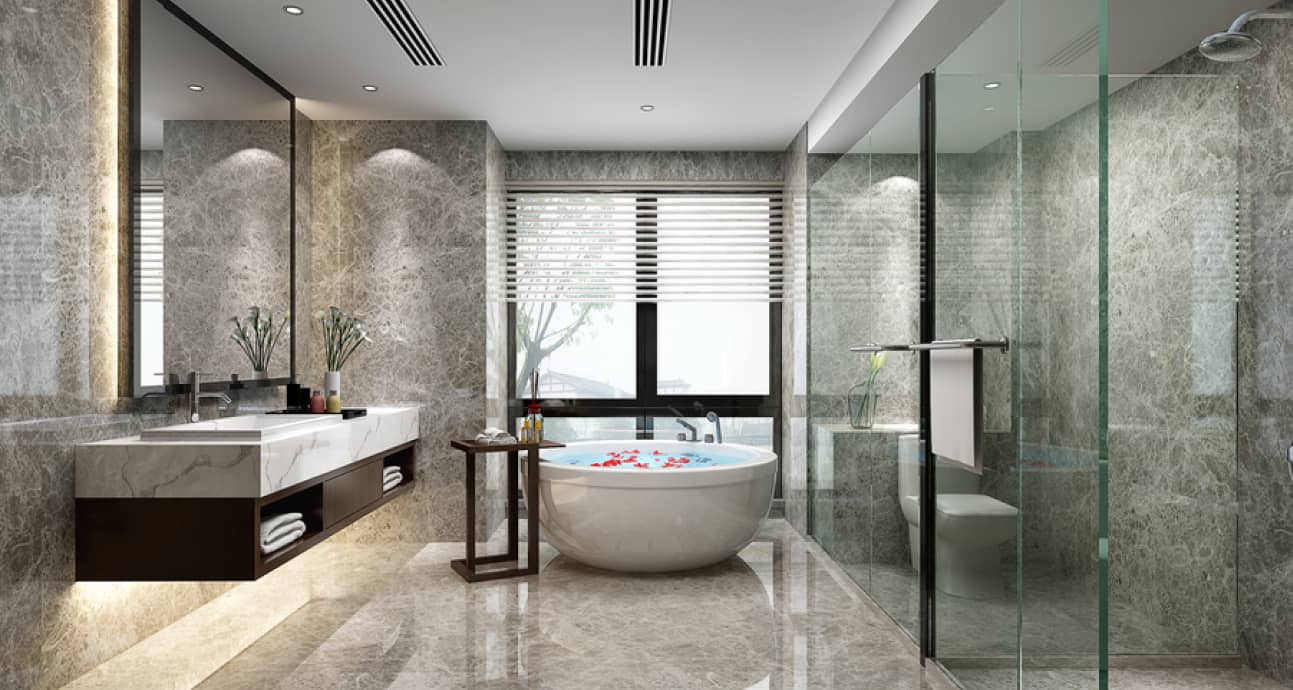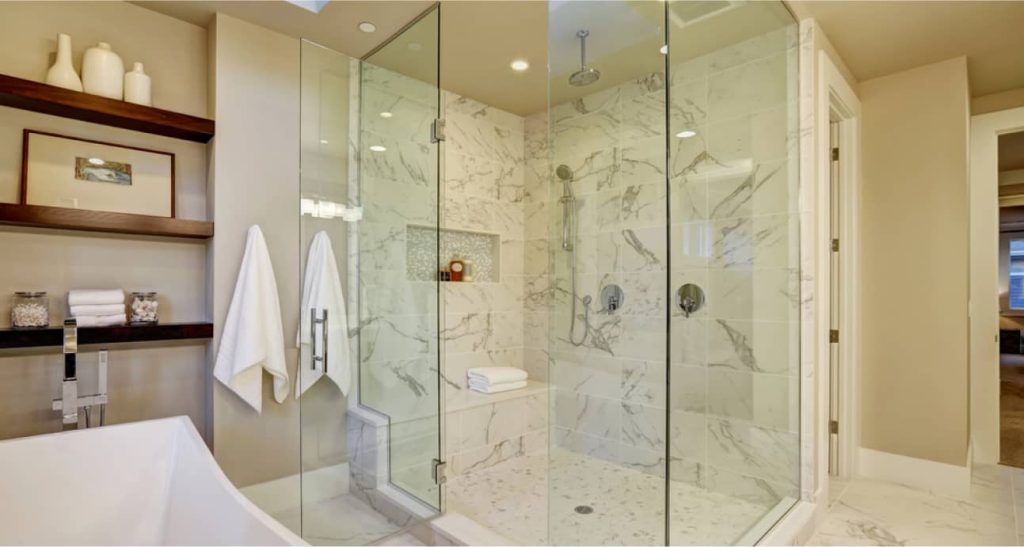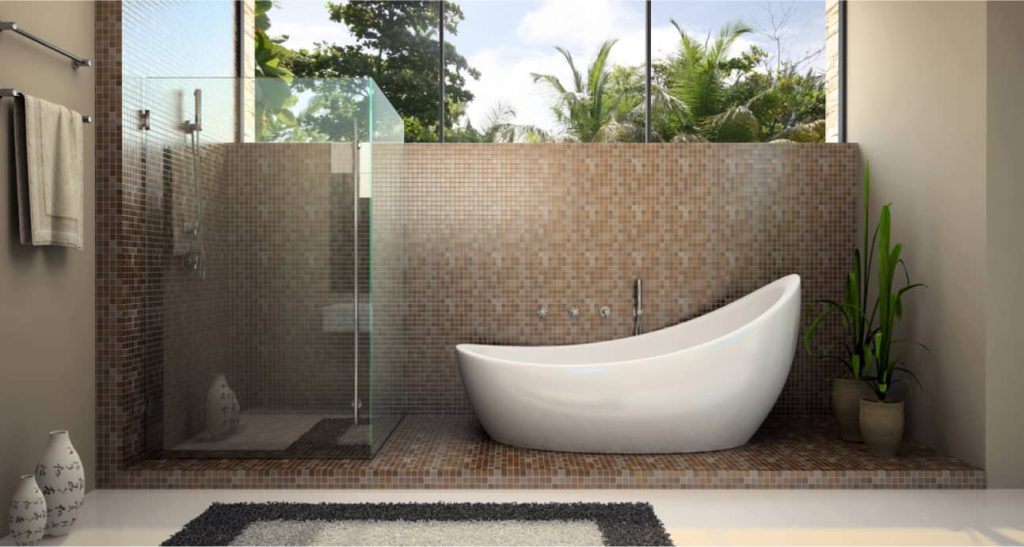
If you're planning a bathroom remodel, one of the biggest choices you'll face is whether to install a walk-in shower or a bathtub. Both options bring unique benefits and styles.
The right pick depends on your space, lifestyle, and long-term plans. This guide walks you through the pros, cons, and design trends to help you make a confident decision.
Key Summary
Walk-in showers are best for accessibility, smaller spaces, and a clean, modern look. Bathtubs offer comfort, relaxation, and family flexibility. Your lifestyle, space, and budget should guide the decision. If you’re remodeling, consider bathroom design trends, resale value, and future needs before you commit.
Walk-In Showers vs. Bathtubs: Quick Comparison
Walk-in showers and bathtubs serve different purposes, and your choice often comes down to how you use your bathroom. Here's a quick side-by-side view to compare key features:
| Feature | Walk-In Shower | Bathtub |
|---|---|---|
| Accessibility | Ideal for aging in place | Harder to access for some users |
| Style | Modern and open | Classic and cozy |
| Space Needs | Fits small bathrooms | Needs more floor space |
| Water Use | Uses less Water | Uses more water per use |
| Relaxation | Quick and efficient | Better for long soaks |
| Cleaning | Easier to Cleaning | Can be harder to scrub |
| Installation Cost | Prefab kits can be affordable | Standard tubs are often lower cost |

Pros and Cons of Walk-In Shower
Walk-in showers offer a sleek, accessible design that fits both small and large bathrooms. They're practical for everyday use but may lack the luxury feel of a deep soak.
Pros:
Easier access:
Ideal for seniors, people with mobility concerns, or anyone aging in place.
Space-efficient:
Great for tight layouts or guest bathrooms.
Low maintenance:
No tub walls mean fewer corners to clean.
Modern look:
Frameless glass, curbless entry, and linear drains are popular design choices in 2025.
Cons:
Space hog:
A standard tub takes up more room than a walk-in shower.
Less accessible:
Stepping over the tub wall can be tricky for some.
Higher water use:
Baths use significantly more water than showers.
Harder to clean:
Corners and curves can trap soap scum and grime.
Key Factors to Help You Decide
Choosing between a walk-in shower and a bathtub isn’t just about style; it’s about how well the choice fits your life, space, and future plans. Below are the key factors every homeowner should weigh before making the call.
Accessibility and Aging in Place
Walk-in showers offer safer access for people with limited mobility. A curbless design, paired with grab bars and slip resistant tile, makes it easier to step in and out without risk.
If you’re planning to stay in your home for many years, a walk-in shower can help make the bathroom more functional as your needs change. Bathtubs, especially those with high walls, can be difficult for seniors or people recovering from injury.
Lifestyle and Daily Habits
Think about how you use your bathroom most often. If your mornings are all about quick showers, a walk-in setup will save time and feel more efficient.
But if you wind down with a bath or want a space to relax and soak, a bathtub makes more sense. Families with young children also tend to benefit from having at least one tub in the home.
Resale Value and Buyer Preferences
Walk-in showers are stylish and desirable in many modern homes, especially in urban areas. However, in suburban neighborhoods or family homes, having at least one bathtub can be a selling point.
Real estate agents often suggest that bathrooms without tubs may limit appeal to buyers with kids or those who prefer the option to soak.
Bathroom Size and Layout
Small bathrooms benefit from walk-in showers because they open up floor space and create an airy feel.
If you’re working with limited square footage, a corner shower or frameless glass enclosure can make the room feel larger.
Bathtubs, particularly freestanding ones, need more space to function comfortably and look right in the design.
Budget and Installation Costs
Standard alcove bathtubs are often less expensive to install than custom walk-in showers. However, Prefab shower kits can also be a more affordable option.
Costs for walk-in showers go up with custom tile, waterproofing, and premium fixtures. If your renovation budget is tight, compare both options based on total installation, not just the fixture itself.

Latest Bathroom Design Trends to Consider
Today’s bathrooms offer a balance of function and upscale design elements. Whether you choose a walk-in shower, bathtub, or both, here are 2025 trends that can shape your design choices:
Frameless glass showers:
These create a clean, open look and pair well with any tile or color scheme.
Large-format tile:
Fewer grout lines mean a more seamless look and easier maintenance.
Floating vanities:
These open up floor space and add a contemporary edge to both small and large bathrooms.
Matte black and brushed brass fixtures:
These finishes are replacing polished chrome for a warmer, more dramatic vibe.
Built-In shower niches and benches:
These functional upgrades add storage and comfort to walk-in showers.
Freestanding soaker tubs:
Sculptural tubs make a visual statement and create a relaxing, spa inspired feel in larger bathrooms.
Heated floors:
Radiant heat adds luxury and comfort, especially in colder climates like Denver.
Final Thoughts
Both walk-in showers and bathtubs have their place in modern bathroom design. Your decision should come down to how you use the space, what your future needs may be, and what adds the most comfort and value to your home.
A walk-in shower offers convenience, accessibility, and a modern aesthetic. A bathtub brings relaxation, style, and flexibility for families. Some homeowners even find room for both, especially in larger bathroom layouts.
If you're unsure, talk to a professional who can help you visualize your options, consider resale factors in your area, and guide you based on your space and budget.
Need help finding the right bathroom remodeler?
Team Dave Logan makes it easy to connect with screened local contractors who are experienced, licensed, and ready to bring your vision to life. Start your project with confidence by requesting a quote today.t
FAQs
Is a walk-in shower better than a bathtub?
A walk-in shower is better for accessibility and space saving, while a bathtub is better for soaking and family use. The right choice depends on your lifestyle, bathroom size, and whether relaxation or function matters more in your daily routine.
Do walk-in showers use less water than bathtubs?
Yes, walk-in showers typically use less water than bathtubs. A 10-minute shower with a standard showerhead uses around 20–25 gallons, while filling a bathtub can use 40–70 gallons.
What adds more value: a tub or a shower?
A home with at least one bathtub can appeal to families and increase resale value in certain markets. However, walk-in showers are seen as modern upgrades and may add more value in smaller or urban homes.
Can I have both a tub and a shower in one bathroom?
Yes, many homeowners install both a walk-in shower and a bathtub, especially in primary bathrooms. This gives you flexibility for quick showers or relaxing soaks and can help attract a wider range of future buyers.